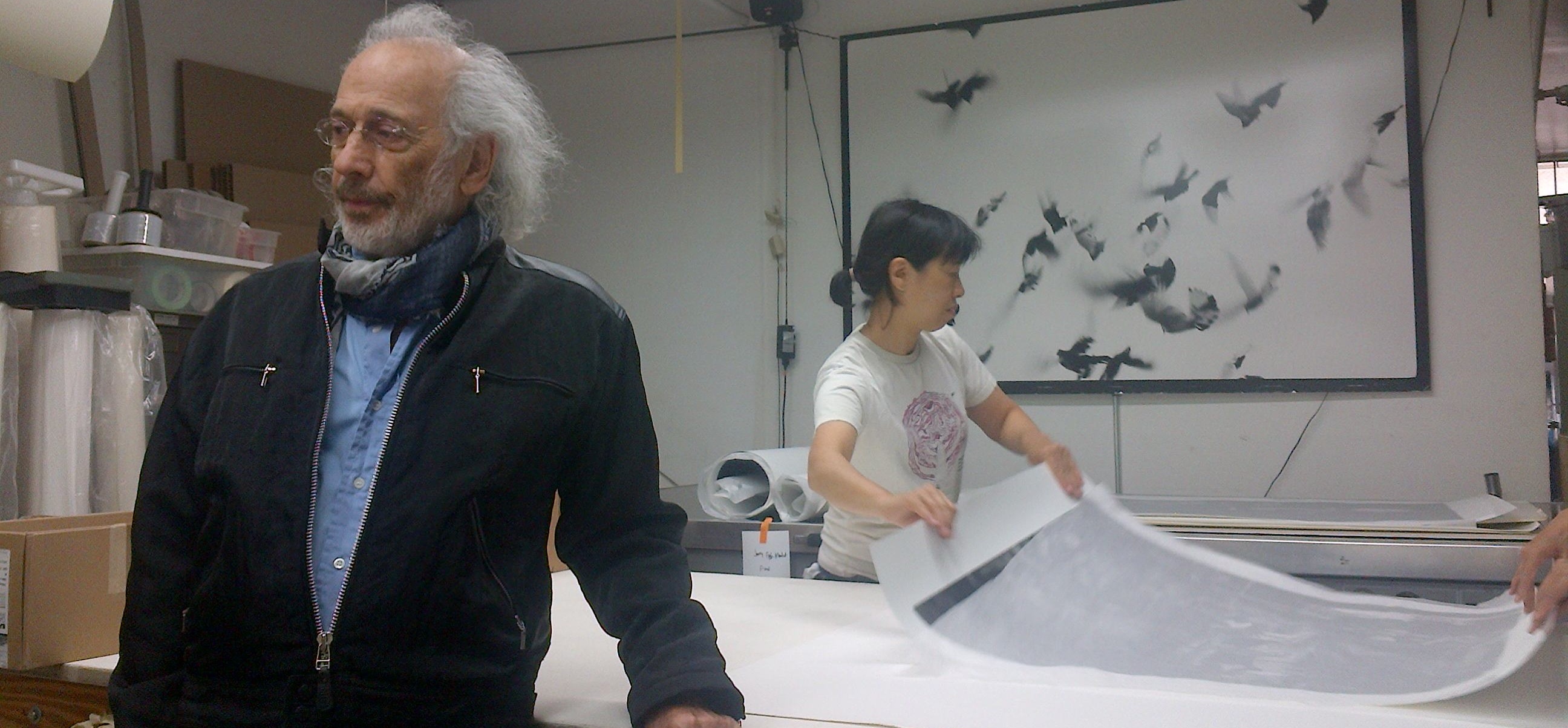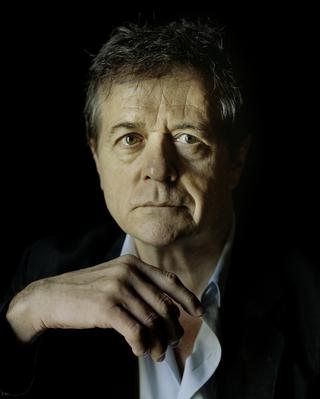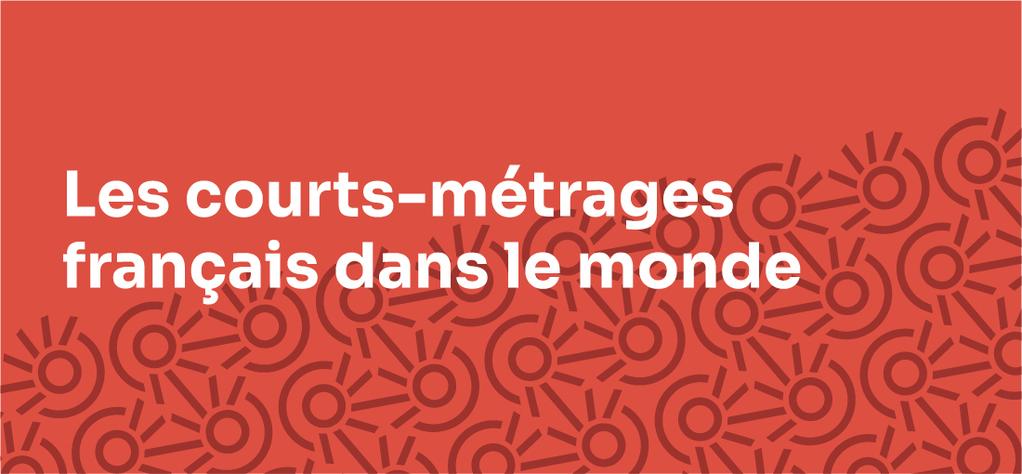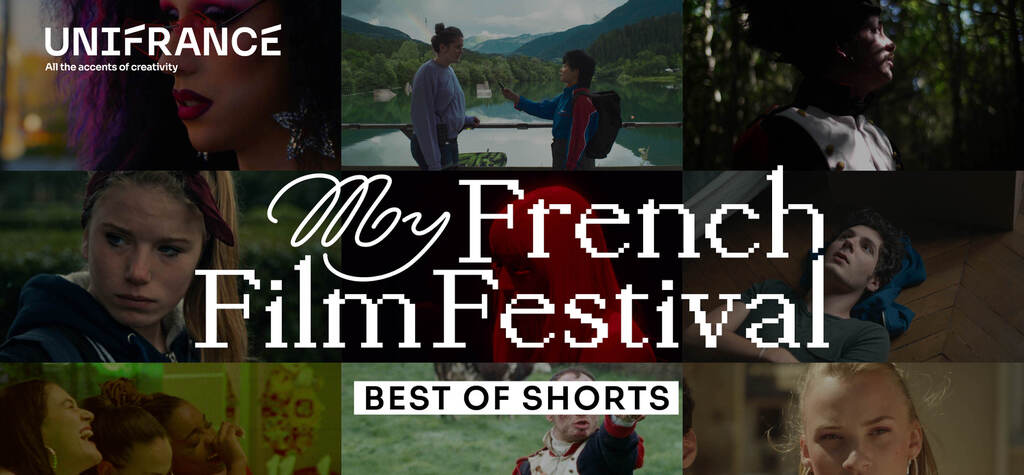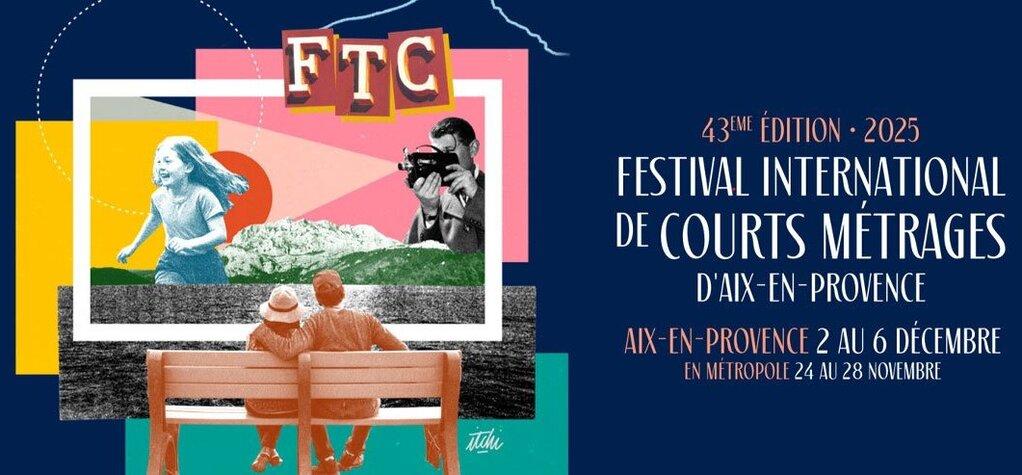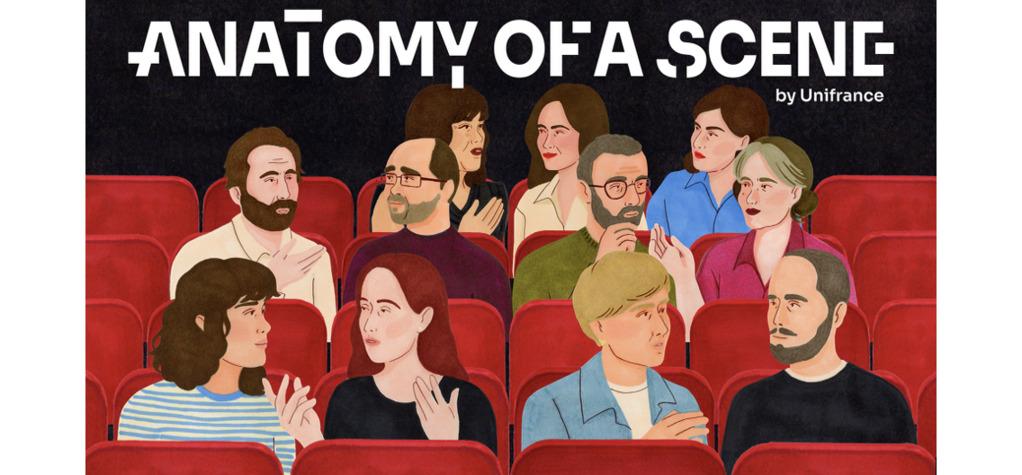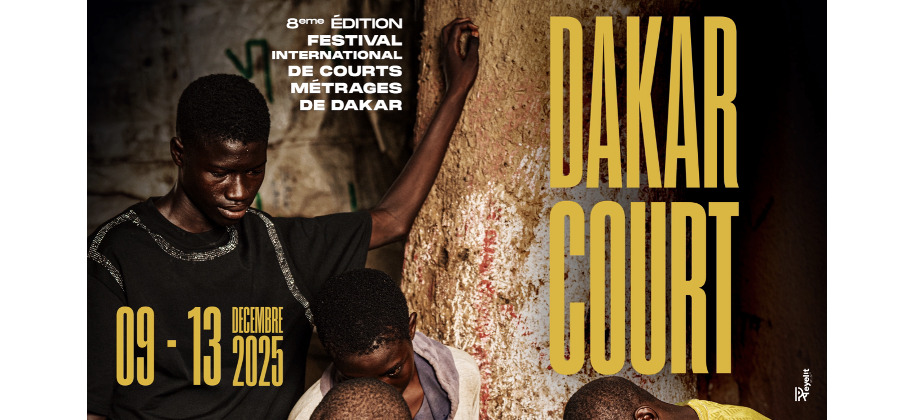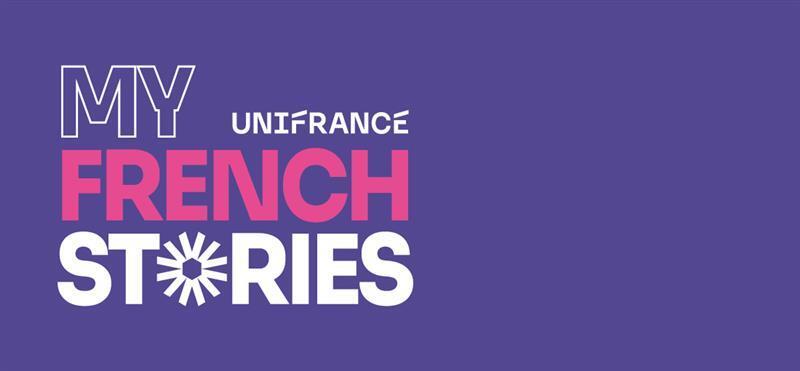UniFrance sent Nicolas Saada to New York from October 9 through 13, 2013, to promote his short film.
"There are roughly three New Yorks. There is, first, the New York of the man or woman who was born there, who takes the city for granted and accepts its size, its turbulence (...) Second, there is the New York of the commuter - the city that is devoured by locusts each day and spat out each night. Third, there is New York of the person who was born somewhere else and who came to New York in quest of something..." - E.B. White, 1949
Wednesday, October 9
New York, here I am.
The reason for the journey: the presentation of my short film Today, co-produced by mk2 films (and Ciné+), programed in the "Short Programs 3" at the New York Film Festival.
The film was shot at the end of 2012, with a cast including Bérénice Bejo, Frederick Wiseman, Kolia Abiteboul, Anna Sigalevitch, and the always wonderful Fred Epaud. Léo Hinstin was D.O.P and Erwann Kerzanet took care of the sound. Shooting took place over two days, with a closely-knit and determined crew. Now all of this is a lovely memory, and being in New York to promote and present the film makes me very proud.
And yet, in the cab taking me downtown, I'm suddenly overcome with a strange feeling. Why?
It's probably due to the grey sky, along with the damaged buildings and the pavement looking more rudown than usual.
I start up a conversation with the Haitian driver. Griffin is a cheerful man who decides to avoid the traffic jams and to take me to my destination via Brooklyn.
He's been working in the USA for forty years. Like many Haitians settled in the United States, he fled Port au Prince in the 1980s.
He now hopes to bring his family, who were badly affected by the 2010 earthquake, to join him.
He holds up a plastic pouch filled with documents: the paperwork that will allow him to sponsor his cousins and sister so that they can come and join him in the United States and find work. His two children already have jobs - his son's in computers and his daughter wants to become a nurse.
"She was born there," he says, pointing at a massive building, one of Brooklyn's largest hospitals.
"On December 21, the hospital is shutting down and no-one will be able to be treated in this neighborhood. I live in Long Island, but I think of my friends, of all those who'll no longer have a hospital, access to any medicine."
We forget our dream America for a little while and put to the side our naive wonderment sustained for so long by films and songs.
America is suffering, like many other countries. And on this October 9, the country is still in the middle of the "shutdown" which has paralyzed the country's state institutions.
Griffin voted for Obama. He supports him wholeheartedly and explains to me that the Health Care Act must pass: America's poorest citizens no longer have access to health care and the middle class is beginning to stop seeking treatment. Some go to Canada to buy their medicine, and when they don't find what they need, they buy it over the Internet - even when it's passed its use-by date.
And the hospitals are shutting down, like the one where Griffin's children were born.
Last summer, when I traveled with my family along Route 66, exploring the backwoods and passing through places such as Paige, Kingman and Kanab, I'd already noted how much this great country was suffering.
But even here in New York, the city where everything happens quickly, the "trendy and cosmopolitan" city, we can sense the presence of this new poverty that is now affecting the world's major economies.
We can't criticize America filmmakers for not dealing with these problems in their films, from independent productions (last year's tremendous Compliance), up until the recent Hunger Games, a parable about this society undergoing major upheaval.
My first evening, a dinner with Vincent Paul-Boncour, the founder of Carlotta Films, a distribution company specializing in wonderful restorations of great classic films for DVD and theatrical release. He's in town to present two restorations of films by Leos Carax at the New York Film Festival. We meet up on West Broadway at the Odeon cafe.
It hasn't changed, or if so, barely. I celebrated my 19th birthday here, back in 1984, when I was studying film at the School of Visual Arts. At that time, we could see the Twin Towers from the street.
Vincent is a very committed movie buff, who fights, along with others such as Manuel Chiche, to keep treasures from the past alive today: Richard Fleischer, Douglas Sirk, Fassbinder, Mizoguchi, and Pier Paolo Pasolini. Carlotta's upcoming slate includes new Blu-ray editions of Heaven's Gate and Brian de Palma's The Fury, along with the highly awaited theatrical release of The Deer Hunter. He's also opening a New York office for Carlotta. Vincent embodies a lively passion for movies, one that looks to the future and one that every filmmaker needs. Because without other people's films, without films from the past, we're nothing.
Thursday, October 10
The New York Film Festival is more than an institution, it's a haven for everyone in love with movies and, in some cases, it's also an opportunity to see films that will never be broadly distributed in the United States. When he's not working on a film, Wes Anderson almost never misses a single session.
Many of the films in the Cannes line-up have their premiere American screenings at the NYFF, before continuing on to Telluride and the other major autumn film festivals in America. This year's program includes Nebraska by Alexander Payne, the wonderful Jimmy P. (Psychotherapy of a Plains Indian) by Arnaud Desplechin, and Blue is the Warmest Color
by Abdellatif Kechiche, along with programs of avant-garde films and restored classics.
The festival offers a very warm, relaxed welcome, while still being highly organized: guests are kept up to date about events, from masterclasses to parties or special screenings.
Emma Myers and Gavin Smith are my hosts for the day. Gavin is one of the mainstays of Film Comment, the great film magazine published by the Film at Lincoln Center, the equivalent of our Cinémathèque. English by birth, he moves about from theater to theater, commenting on the day's mishaps (a guest who's gone missing, a session starting late, material that didn't turn up).
Kent Jones, the festival's Director of Programing, is also one of these open and curious cinephiles who can appreciate the beauty of the closing sequences of Skyfall and the sublime dreamlike passages of Ingmar Bergman's Hour of the Wolf.
I've known him for a little while now and I was completely taken by surprise to learn that Aujourd’hui had been selected. Serendipity would have it that Fred Wiseman's enthralling On Berkeley was presented a few days before my arrival. Jones enjoyed the encounter in Aujourd'hui between the great filmmaker and Bérénice Bejo.
Before the evening screening, planned for 9 p.m., I have time to dash to the mythical Strand bookstore on the corner of Broadway and 14th Street.
At this time that tablettes, Smartphones and e-Readers are all the rage, Strand still proudly resists the onslaught of virtual books. It's four floors are an Aladdin's cave of treasures. You can find latest releases alongside new editions, and tables stacked with rare, secondhand books. I leave the store with a volume of Stephen Crane stories, a collection of poetry by Wyn Cooper (a brilliant writer), and Seeing and Knowing, a book, almost impossible to find, by the art critic Bernard Berenson.
Berenson hasn't been translated into French, and yet his work is of major importance in the evolution of the history of art. A collector and art lover, and specialist of Florentine paintings, his work left its mark on Federico Zeri and Ernst Gombrich. In spite of this, he remains relatively forgotten, to the despair of his great-niece, who all Stanley Kubrick fans surely know: Marisa Berenson.
Before returning to the Lincoln Centre, I make sure that two close friends will be at the screening: one is an architect, Guelfo Carpegna (who showed me the wonderful sculpture by Henry Moore at Colombus Circle), the other is an actress, Archie Panjabi. She played the part of Anna in Spy(ies), and we've kept in touch ever since. She now lives in New York, where she's acting in the fourth season of NBC's The Good Wife, which is currently shooting. Her popularity among television viewers hasn't stopped her from remaining as discreet as she was before, despite the Emmy she was awarded for her work in the series. In 2010, Archie became involved in a major campaign to raise awareness about polio and she travels to isolated regions in her native India to encourage vaccination. We have a long conversation about movies, life, and my next film, set in Mumbai.
Today three other short films made by Jonathan Romney, Michael Almereyda, and Damien Chazelle are also being presented.
First up, the festival organizes a meeting with all the filmmakers who've come to present their short films. I'm amazed to see that I'm the only French person among an impressive delegation of filmmakers who've come from Brazil, Israel, Mexico, and Argentina. Surrounded by such talents, one feels like an "old beginner" and Michael Almereyda, the director of the incredible Hamlet (with Ethan Hawke) and Nadja, seems to humorously share my feelings.
9 p.m., Shorts Program#3:
The films by Jonathan Romney (the brilliant and phlegmatic British film critic), Damien Chazelle (a highly gifted filmmaker who we'll be hearing a lot more of), and Michael Almereyda stand out with their relaxed humor and their narrative power: the rehearsal of an orchestra which becomes mental torture (Whiplash, Chazelle), the black and white adaptation of an Italo Calvino story, transposed to the East Village, with an off-screen narrator (The Man Who Only Came Out At Night, Almereyda), and the waking nightmare of a movie buff kidnapped by a very sixties Italian film (L’Assenza, Romney) . The program of four films could be watched like a collection of very dark stories, and I thank Gavin Smith and Kent Jones for having programmed Aujourd’hui in such fine company.
The party following the screening at the Paramount Hotel on Broadway allowed me to meet Richard Linklater, who was celebrating the twenty year anniversary of Dazed and Confused, and whose subsequent films, in particular Before Midnight, also continue to exert their charm.
Friday, October 11
The intensity of a short visit often makes us lose our bearings: you no longer know when you arrived and when you're to leave. Fatigue and jetlag don't really have time to take hold in such a compressed time. You try to take as much advantage of the city as you can. New York has changed a huge amount in the last twenty years; Lower Broadway has now become a neighborhood of swank, upper-end label boutiques.
I'm not going to play the Parisian trying to track down the real New York.
But when I realize that I'll probably have to return to the MoMA on Sunday because of the endless queues, I decide to head for the World Trade Center Memorial, on the express line leading to the Staten Ferry Island dock.
Despite the crowds, the traffic, and the bustle of tourists snapping photos with their little cameras and Smartphones, a strange, somber feeling still pervades this place twelve years after 9/11. Workers hang from scaffolding as they focus on finishing the construction of the new high-rise building that will take the place of the Twin Towers.
Street vendors try to palm off catalogues of grim photos. Under the watchful eye of traffic cops, we head down a "Memory Path" that runs alongside the building site. Looking at this place makes you shiver. You can imagine that, one fateful morning, these streets, these crossroads, this little garden were drenched in concrete dust, ashes, and floating plastic detritus.
It's strange: there are two movements, similar to those described by E.B. White: that of the city at work, and that, out of sync, of visitors who've come to look at a place that has disappeared, a trace of history. It's raining, the sky is low and grey.
Fortunately a visit to Jerry Schatzberg's studio gets the better of this melancholy mood. The filmmaker is currently preparing an exhibition, which will be opening in Paris on November 6. Anyone who may be unaware of his photography work has at least seen one of his photos: the portrait of Bob Dylan on the cover of Blonde on Blonde. Schatzberg's photography exhibition will certainly be one of the big events this autumn, accompanied by the rerelease of one of his finest films, L’ami retrouvé, a delicate chronical of a friendship crushed by the march of history.
That evening, we link up with the French delegation in an Indian restaurant at Colombus Circle: it's an opportunity to thank Adeline Monzier of Unifrance, and all her team.
A conversation with Jonathan Sehring from IFC, the delighted American distributor of Blue Is the Warmest Color, allows me to gauge the increasing difficulties faced by independant and foreign movies in the United States. Today the main concern is the way in which spectators continue to be less and less engaged by movies, more focused on their Smartphones and sending text messages, even during screenings. How do you grab the attention of audiences who are increasingly distracted, who prefer the comfort of watching films and television series on their home entertainment systems instead of the shared experience of movie-going in a theater? Particularly when a film follows a different path than that of traditional cinema.
I don't pretend to have any answers because this problem is not only restricted to the American public.
Saturday, October 12
A lunch with one of the chief editors of Paris Match, Caroline Mangez. As is the case with every other sector, the press is facing severe budgetary restrictions which are having repercussions on the work of reporter journalists and photographers. Like other "news" magazines, Paris Match is having to cope with this current context so hostile to printed media. This year, Newsweek published the final printed version of its magazine. And we wonder whether other leading newspapers or magazines, such as The New Yorker or Time, will manage to resist for much longer.
This afternoon we'll go and see the latest film by Paul Greengrass, Captain Phillips, which is out on release in New York theaters after opening the New York Film Festival. It's a powerful tale, based on real events, of the invasion of a container ship by Somali pirates, and the hostage-taking of the ship's captain and its crew. Although tautly told, we prefer the more intimate A Hijacking, released in French theaters last August.
In the evening, it's back to the New York Film Festival and an unforgettable night high up in the Standard Hotel, which dominates Hudson Bay, to celebrate Spike Jonze's latest film. Rivetted to his iPhone, actor Philip Seymour Hoffmann takes little notice of anything. Kent Jones observes the scene with his characteristic humor and detachment. He's happy, and his superb work as the co-scriptwriter on Desplechin's Jimmy P. allows us to glimpse a whole new career for this man who for many years has been one of Martin Scorsese's close collaborators.
Sunday, October 13
The MoMA is currently hosting two important exhibitions. The first, dedicated to Magritte, often has queues curling round the block and in which one must wait for several hours. Magritte's paintings have in common this ease with their fantastical side, a heritage of Surrealsim, which mixes with a morbid fascination for unreal bodies, effaced faces, weird silhouettes and shapes. Visitors are stunned.
However, the second exhibition is the one that offers the most wonderful surprises, including Hopper's watercolors that weren't shown during the major retrospective at the Grand Palais in Paris last year.
Now we're rushing. We've got to make it snappy, get to the airport, and wait for the drowsiness that will overtake us on the plane on the way back to Paris.
This is the first time I've come to present one of my films in the United States since 2009, when the terrific Chicago Film Festival had selected Spy(ies). At that time, I caught up with Patrice Chéreau, with whom I'd crossed paths many times via Richard Peduzzi, a close friend and collaborator of Chereau's. Chéreau had come to Chicago to present Persécution, never imagining that it would be his last film.
The plane arrives in Paris on October 14. Patrice Chéreau will be buried on October 16, after a moving ceremony at Saint-Sulpice. The memories of this New York trip will soon be brushed aside by an intense feeling of sadness. French film owes much to this great director, for, without Hôtel de France, Queen Margot / A Woman of Evil, or Intimacy, we would not have seen new faces or new ways of acting in front of the camera.
NS
With thanks to: Irving, Sarah and Alessandra Petlin for their welcome; Archie Panjabi; Guelfo Carpegna; and the teams of the NYFF and UniFrance films.


